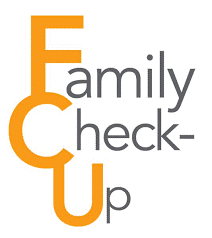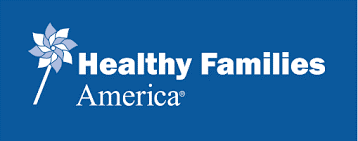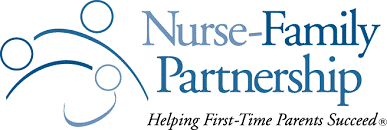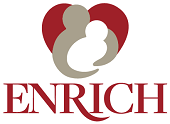What is Home Visiting?
Home visiting is a prevention strategy designed to improve the health and well-being of expectant families and families with young children. Home visiting programs typically serve communities that face greater risks and barriers to achieving positive maternal and child health outcomes. Families choosing to participate in home visiting programs partner with home visiting professionals to set and achieve goals that improve their family's well-being.1
Home visiting professionals work with families in their homes, virtually, or at a location of their choice. Home visitors offer direct services and link families to community resources. Home visiting is a two-generation approach, delivering both caregiver and child-oriented services focused on a variety of areas, including:
- Child health and well-being
- Child development and school readiness
- Positive caregiver-child relationships
- Caregiver health and well-being
- Family education and employment
- Family functioning
States, territories, the District of Columbia, and tribal organizations implement home visiting models that match the needs of their communities using varied funding streams, including the federal Maternal, Infant, and Early Childhood Home Visiting (MIECHV) Program. MIECHV recognizes 27 home visiting models as evidence-based.2 In 2023, evidence-based home visiting programs operated in all 50 states, the District of Columbia, 5 U.S. territories, and 41 tribal communities.3Home Visiting as a Setting for Cardiovascular Disease Prevention
Poor cardiovascular health (CVH) contributes to high levels of morbidity and mortality in the United States. CVH deteriorates across the lifespan, with accumulating disease risk factors beginning in early childhood, requiring new clinical and public health strategies to improve the nation's cardiovascular health.4 Health promotion in pregnancy and early childhood is essential for establishing healthy CVH trajectories across the life span.5
Sustained improvement in CVH requires two-generation strategies in settings where those at elevated risk for poor CVH already receive care. Home visiting offers an opportunity to connect with expectant families, parents and young children at a time when all families need support. MIECHV-funded local programs often serve high need communities where many families have low levels of education; high levels of public assistance and food insecurity; tobacco, alcohol or drug use; and depressive symptoms.6 Evidence-based home visiting programs work with families to achieve a wide variety of health and health-related outcomes, and multiple studies highlight the effectiveness of partnering with home visiting programs to offer behavioral and lifestyle interventions to address factors associated with CVH, such as obesity.7,8
Evidence-Based Home Visiting Models in ENRICH
Family Check-Up
 (FCU) works with families of children up to 17 years. FCU focuses on families with children who are at risk for conduct problems and academic challenges and who face familial adversity including socioeconomic disadvantages and parental depression. FCU is a strength-based, family-centered intervention that aims to reduce children's behavioral problems, academic difficulties, and emotional problems, and to improve maternal depression, parental involvement, and positive parenting.10
(FCU) works with families of children up to 17 years. FCU focuses on families with children who are at risk for conduct problems and academic challenges and who face familial adversity including socioeconomic disadvantages and parental depression. FCU is a strength-based, family-centered intervention that aims to reduce children's behavioral problems, academic difficulties, and emotional problems, and to improve maternal depression, parental involvement, and positive parenting.10
In 2023, FCU operated in 39 local agencies across 17 states.ENRICH Clinical Centers partnering with FCU: University of PittsburghHealthy Families America
 (HFA) works with pregnant and parenting families of children prenatally up to age 5 years. HFA aims to cultivate and strengthen nurturing parent-child relationships, promote healthy childhood growth and development, and enhance family functioning by reducing risk and building protective factors.10
(HFA) works with pregnant and parenting families of children prenatally up to age 5 years. HFA aims to cultivate and strengthen nurturing parent-child relationships, promote healthy childhood growth and development, and enhance family functioning by reducing risk and building protective factors.10
In 2024, HFA operated in 593 local agencies across 38 states and the District of Columbia, American Samoa, Guam, the Northern Mariana Islands, Puerto Rico, and the U.S. Virgin Islands. HFA provided 892,093 home and virtual visits to 66,211 families.10ENRICH Clinical Centers partnering with HFA: Cal Poly/Brown Universities & Northwestern UniversityNurse-Family Partnership
 (NFP) works with pregnant families and their children until age 2 years. NFP aims to improve pregnancy outcomes by helping to improve prenatal health; child health and development through promoting sensitive parenting; and parents' life trajectories by helping to plan subsequent pregnancies, continue education, and find work.10
(NFP) works with pregnant families and their children until age 2 years. NFP aims to improve pregnancy outcomes by helping to improve prenatal health; child health and development through promoting sensitive parenting; and parents' life trajectories by helping to plan subsequent pregnancies, continue education, and find work.10
In 2024, NFP operated in 263 local agencies across 40 states, the District of Columbia and the U.S. Virgin Islands. NFP provided 586,081 home and virtual visits to 54,255 families.10ENRICH Clinical Centers partnering with NFP: Penn State University; University of Colorado/Wake Forest Universities; Cal Poly/Brown Universities; University of Alabama at Birmingham; and Northwestern UniversityParents as Teachers
 (PAT) works with pregnant and parenting families of children prenatally up to kindergarten entry. PAT aims to increase parent knowledge of child development, improve parenting practices, provide early detection of developmental delays and health issues, increase children's school readiness, and prevent child maltreatment.10
(PAT) works with pregnant and parenting families of children prenatally up to kindergarten entry. PAT aims to increase parent knowledge of child development, improve parenting practices, provide early detection of developmental delays and health issues, increase children's school readiness, and prevent child maltreatment.10
In 2024, PAT operated in 862 local agencies across 48 states and the District of Columbia. PAT provided 849,853 home and virtual visits to 72,734 families.10ENRICH Clinical Centers partnering with PAT: Cal Poly/Brown Universities; Northwestern University; University of Alabama at Birmingham; and Washington University in St. Louis- National Home Visiting Resource Center
- Home Visiting Applied Research Collaborative
- Home Visiting Evidence of Effectiveness
- Maternal, Infant, and Early Childhood Home Visiting (MIECHV) Program
- Minkovitz CS, O'Neill KM, Duggan AK. (2016). Home visiting: A service strategy to reduce poverty and mitigate its consequences. Academic Pediatrics, 16(3 Suppl), S105-11. doi: 10.1016/j.acap.2016.01.005.
- Early Childhood Home Visiting Models: Reviewing Evidence of Effectiveness. OPRE #2024-326. 2024. https://homvee.acf.gov/sites/default/files/2025-02/homvee-summary-brief-nov2024.pdf
- U.S. Department of Health and Human Services Health Resources and Services Administration. Report to Congress. Maternal, Infant, and Early Childhood Home Visiting Program 2024. https://mchb.hrsa.gov/sites/default/files/mchb/programs-impact/home-visiting/miechv-fy-2024-report-to-congress.pdf
- Karmali KN, Lloyd-Jones DM. (2014). Achieving and maintaining cardiovascular health across the lifespan. Current Epidemiology Reports, 1, 75-81.
- Goff DC, Buxton DB, Pearson GD, Wei GS, Gosselin TE, Addou EA, et.al. (2019). Implementing the National Heart, Lung, and Blood Institute's Strategic Vision in the Division of Cardiovascular Sciences. Circulation Research, 124, 491-497.
- Duggan A, Portilla XA, Filene JH, Crowne SS, Hill CJ, Lee H, Knox V. Implementation of Evidence-Based Early Childhood Home Visiting: Results from the Mother and Infant Home Visiting Program Evaluation. OPRE Report 2018-76A. 2018. Washington, DC: Office of Planning, Research, and Evaluation, Administration for Children and Families, U.S. Department of Health and Human Services.
- Haire-Joshu D, Schwarz CD, Steger-May K, Lapka C, Schechtman K, Brownson RC, Tabak RG. (2018). A randomized trial of weight change in a national home visiting program. American Journal of Preventive Medicine, 54, 341-351.
- Salvy SJ, Dutton GR, Borgatti A, Kim YI. (2018). Habit formation intervention to prevent obesity in low-income preschoolers and their mothers: A randomized controlled trial protocol. Contemporary Clinical Trials, 70, 88-98.
- Implementing Family Check-Up for Children. https://homvee.acf.gov/models/family-check-upr-children
- National Home Visiting Resource Center. (2025). 2025 Home Visiting Yearbook. James Bell Associates and the Urban Institute. https://nhvrc.org/yearbook/2025-yearbook/
